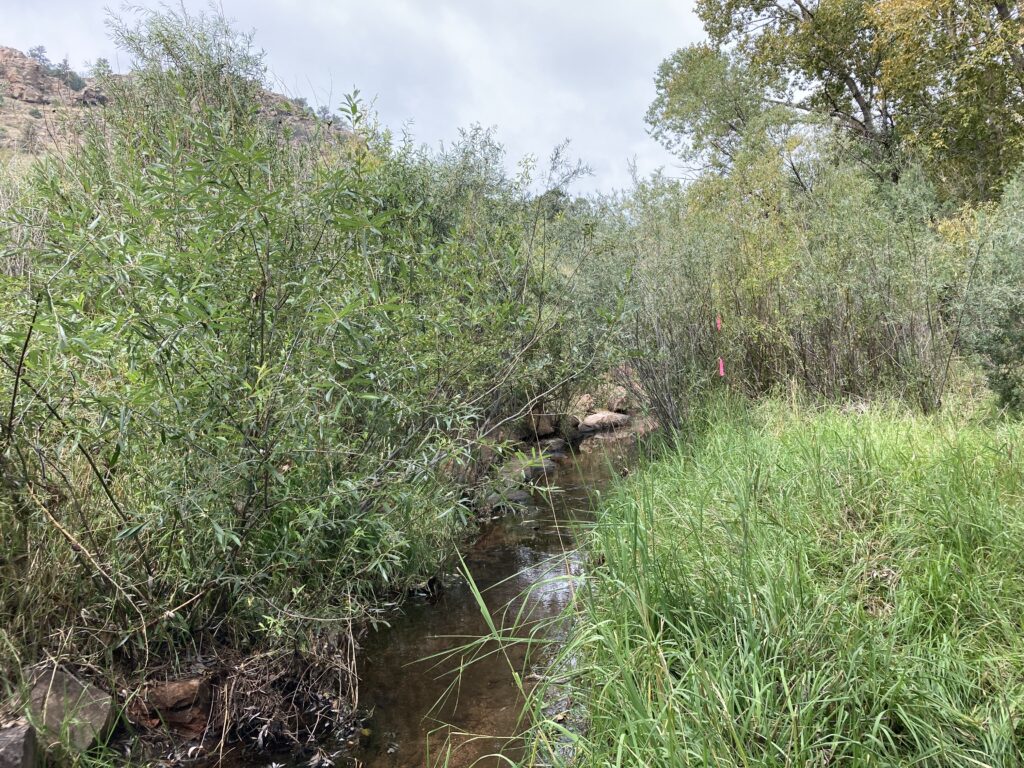Rob Schorr and Terutaka Funabashi
This project was an initial evaluation of the Preble’s meadow jumping mouse (PMJM) populations that exist within the North Poudre Site Conservation watershed, which includes North Fork of the Poudre River, Rabbit Creek, Lone Pine Creek, and various tributaries. Sections of the creeks are considered to be high-, medium-, and low-quality habitat based on the availability of riparian vegetation and size of the creek. For this exercise, we only selected sampling locations along high- and medium-quality habitat to ensure we would capture enough PMJM to estimate abundance. We randomly selected 1-km sections of stream and contacted landowners (public and private) for access in the order locations were selected. Contacts for 30 parcels were identified and attempts to gain permission via phone and email were attempted. We were granted access for 14 sampling locations and 11 of those sites were trapped for PMJM.
Sampling for PMJM was conducted using transects of 40 stations with approximately 5-10 meters between stations, and 2 traps at each station. Each location was trapped for 5 nights providing 400 trap nights (1 trap for 1 night) of effort along approximately 400 m of creek. Of the 11 sites visited, PMJM were confirmed at only 4 locations, with total captures of 3, 2, 1, and 1 PMJM at those locations. All positive capture locations were in the Cherokee State Wildlife Area (Rabbit Creek, South Fork Rabbit Creek, and Lone Pine Creek). Although PMJM were permanently marked with passive-integrated transponder (PIT) tags, no PMJM was recaptured during the effort, making estimation of population size impossible. However, it is assumed, based on capture success, that PMJM were not in high abundance at the locations sampled. Structural vegetation sampling was conducted at each location, which consisted of ground cover, shrub density, canopy cover, and vertical vegetation height.

We attempted to sample 15 locations during this pilot study, but access and only sampling from late-July until September limited the ability to get to more sites. It is unclear whether the North Poudre Site Conservation area has lower abundance than assumed, if PMJM populations are currently in a trough of their population cycles, or if all small mammals are scarce in this area, since overall capture success in all locations was low.


